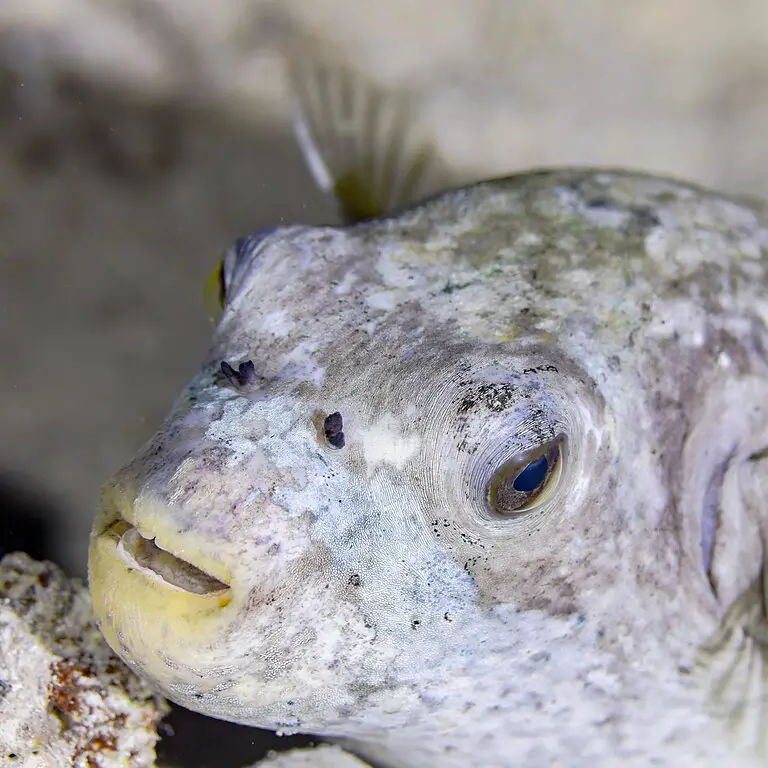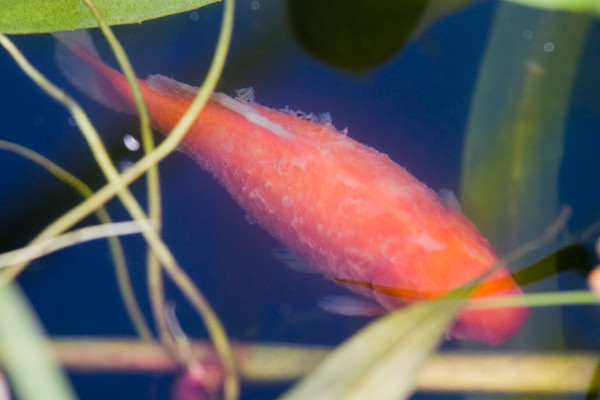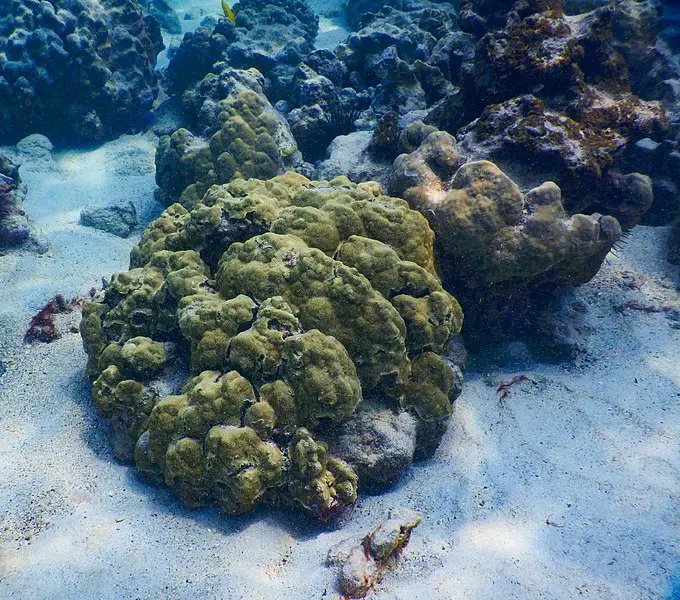Addressing Fish Skin Health: Beyond Aesthetic Concerns
In the intricate and rewarding world of aquarium keeping, the health of our aquatic companions is a fundamental concern. One of the key indicators of their well-being is the condition of their skin.
For instance, Oscar fish, known for their vibrant personalities and captivating presence, are not immune to health challenges like skin peeling. This condition, while concerning in any fish, can be particularly noticeable in species like Oscars, known for their otherwise robust and colorful appearance.
The phenomenon of a fish’s skin peeling is more than a cosmetic issue; it’s an indicator of potential health problems that can range from minor irritations to serious conditions requiring immediate attention.
In this article, we’ll explore the various factors leading to skin peeling in fish, from environmental stressors to diseases, and how these can be effectively addressed. By understanding these challenges, aquarists can ensure their beloved fish, be it the charismatic Oscar or any other species, remain healthy and thrive in their aquatic environment.
Common Causes of Skin Peeling in Fish

When you notice your fish’s skin peeling, it’s a clear sign that something in their environment or health is amiss. Understanding these causes is crucial for effective treatment and prevention.
Bacterial Infections: A Primary Culprit
Bacterial infections often top the list of reasons for skin peeling in fish. These infections can stem from various factors, with poor water quality being a predominant one. When a fish is injured, either from tank mates or sharp objects in the tank, it becomes more susceptible to bacterial infections.
The symptoms can be diverse, ranging from tail rot and red streaks to more severe signs like bulging eyes and abdominal swelling. In smaller fish, these infections can progress rapidly, making early detection and treatment vital.
Treatment involves carefully administering antibiotics. Erythromycin, amoxicillin, and penicillin are commonly used, but it’s essential to match the treatment to the specific infection.
Over or under-treatment can lead to complications, emphasizing the need for accurate diagnosis and adherence to treatment guidelines.
Parasitic Infections: Silent but Deadly
Another cause for skin peeling is parasitic infections, notorious for their ability to quickly devastate an aquarium. These parasites can be introduced through new fish or plants and can remain dormant until triggered by environmental changes. Signs of parasitic infections might include a brown or yellow film on the skin, flaking, or more behavioral symptoms like scraping against tank surfaces.
Preventing parasitic infections starts with a robust quarantine process for all new additions to your tank. This step is particularly crucial for wild-caught fish, which might carry more parasites. Medications like Erythromycin can be effective, but the key is early detection and treatment before the parasites can spread.
Fungal Infections and Environmental Stressors
Fungal infections, while less common, can also lead to skin peeling. These infections usually present with a cotton-like growth on the skin and require antifungal treatments for resolution.
Environmental stressors, such as incorrect pH levels, temperature fluctuations, and unsuitable tank decorations, can also contribute to skin issues. Regular tank maintenance and monitoring of water conditions are vital for preventing these problems.
In-Depth Focus on Ick (Ichthyophthirius Multifiliis)
Among the various ailments that can affect aquarium fish, Ick, scientifically known as Ichthyophthirius multifiliis, stands out due to its prevalence and the distinct challenges it presents. Recognizing and treating Ick promptly is crucial for the health of your fish.
Identifying Ick in Your Aquarium
Ick manifests as tiny, white, crystal-like spots covering a fish’s body. It’s a parasitic infection that causes considerable discomfort, leading to symptoms such as fish scratching against objects in the tank. It’s important to understand that once Ick is visible on one fish, the entire tank is likely affected and requires treatment.
Effective Treatment Strategies
Treating Ick involves a multifaceted approach:
- Medication: Products like Ich-X are specifically formulated to combat Ick. It’s imperative to follow the dosage and treatment duration as per the instructions to avoid harming the fish.
- Aquarium Salt: Adding aquarium salt (not table salt) to the water can help dislodge the parasites from the fish. This method works by creating an environment less hospitable for Ick while providing some relief to the fish.
- Heat Treatment: Gradually increasing the water temperature can accelerate the lifecycle of the parasite, bringing it to a stage where it’s vulnerable to treatment. However, this method requires careful monitoring, as not all fish and tank inhabitants can tolerate high temperatures.
Managing the Treatment Process
While treating Ick, you might notice an initial increase in the number of spots as the heat speeds up the parasite’s lifecycle. This increase is a normal part of the process but requires close observation to ensure the health of your fish isn’t further compromised.
Keeping a close eye on the fish for signs of stress and adjusting the treatment as necessary is crucial. Once the treatment is complete, a thorough cleaning of the tank and water change is recommended to remove any remaining parasites and their eggs.
Preventive Care and Tank Maintenance
Effective preventive care and meticulous tank maintenance are the cornerstones of a thriving aquarium. These practices are vital not just for the beauty of the tank but for the health and well-being of the fish, particularly in preventing conditions like skin peeling.
Advanced Water Testing and Ideal Parameters
- Comprehensive Water Testing: Regular, detailed water testing goes beyond basic pH and temperature checks. It should include testing for ammonia, nitrites, nitrates, and even hardness and alkalinity, depending on the fish species you keep. Establish a routine, such as weekly testing, and maintain a log to track any fluctuations over time.
- Parameter Optimization: Each species of fish has specific needs in terms of water parameters. Research and maintain the ideal conditions for your specific fish, considering factors like temperature, pH, hardness, and salinity. Sudden changes in these parameters can cause stress and skin problems in fish.
Thorough Cleaning Routines and Tank Management
- Substrate and Decoration Cleaning: Vacuum the substrate to remove food waste and feces, which can become a breeding ground for harmful bacteria. Be cautious with decorations; clean them regularly to prevent algae buildup but avoid harsh chemicals that can alter water chemistry.
- Regular Water Changes: Implement a consistent schedule for partial water changes, typically 20-30% of the tank volume. This helps in diluting toxins and replenishing essential minerals. Ensure the new water is treated and matches the tank’s temperature and chemistry.
- Filter Maintenance: Regularly clean and maintain the aquarium filter. A clogged or inefficient filter can lead to poor water quality, significantly impacting fish health.
Nutrition and Dietary Management
- Diverse and Species-Specific Diet: Understand the dietary needs of your fish. Carnivores, herbivores, and omnivores each require different types of food. Offer a mix of high-quality flakes, pellets, frozen, and live foods to ensure a balanced diet.
- Feeding Regimen: Overfeeding is a common mistake in aquarium care. Follow a strict feeding schedule, usually once or twice a day, providing only as much food as your fish can consume in a few minutes.
Optimizing the Tank Environment
- Aquascaping and Space Requirements: Design your tank to mimic the natural environment of your fish. Include plants, rocks, and hiding spaces, and ensure there is enough open space for swimming. Avoid overcrowding, as this can lead to stress and territorial disputes.
- Decoration Safety: Choose tank decorations carefully. Avoid sharp edges that can injure fish, leading to infections and skin peeling. Opt for smooth-surfaced decorations and ensure any artificial plants are soft and flexible.
Observation and Quarantine Protocols
- Regular Observation: Pay close attention to the behavior and appearance of your fish. Changes in eating habits, activity levels, or appearance can indicate health issues.
- Effective Quarantine Measures: Any new additions, including fish and plants, should be quarantined in a separate tank for at least 2-4 weeks. This helps in identifying and treating any potential diseases before they can be introduced to the main aquarium.
Conclusion
As we have explored, the health of fish in an aquarium is deeply intertwined with the environment they inhabit and the care they receive. Skin peeling in fish can be a symptom of various underlying issues, ranging from water quality problems to infections and parasitic attacks. Understanding these causes and implementing the right treatments is crucial for the well-being of your aquatic pets.
However, it’s important to remember that prevention is always better than cure. Regular maintenance of the aquarium, including water testing, cleaning, and monitoring the fish for any signs of distress, plays a critical role in preventing health issues. A balanced diet and a stress-free environment contribute significantly to the overall health of the fish.
In cases where treatment is necessary, it’s essential to correctly diagnose the issue and choose the appropriate treatment method. Whether it’s a bacterial infection, a parasitic attack like ick, or a fungal issue, the correct treatment administered in a timely manner can make a significant difference.
As with all aspects of pet care, when in doubt, consult with a veterinarian or an aquatic specialist, especially for more severe or persistent issues. Their expertise can provide guidance and help you ensure that your aquarium remains a healthy and joyful environment for your fish.
Remember, the journey of aquarium keeping is as much about enjoying the beauty and diversity of aquatic life as it is about responsibly caring for it. By staying informed and attentive to the needs of your fish, you can ensure they thrive and bring joy and tranquillity to your home.


